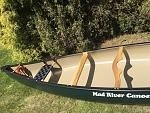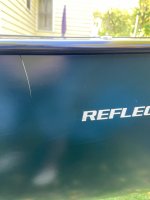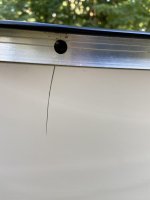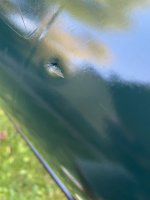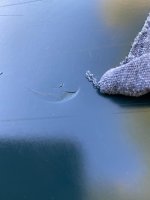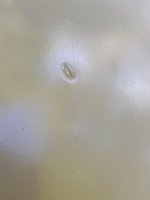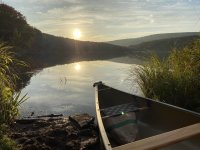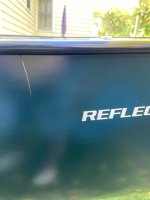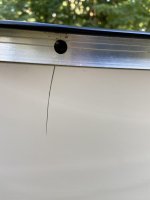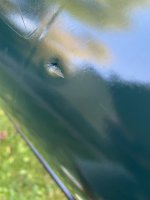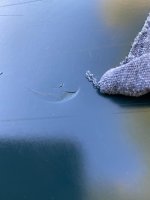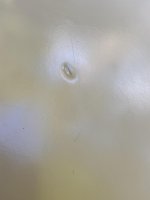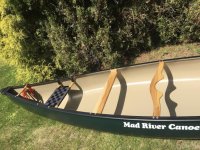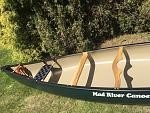Hello, I am a long time reader, but seldom post.
I have a 2014 Mad River Reflection 15 in Royalex with black coated aluminum gunwales that I purchased new in 2016 from a retailer in New York's Hudson Valley.
It's my first canoe and has been a good boat to learn on and use up in the Adirondacks and locally here in the Hudson Valley as well.
I've installed a kneeling thwart in it for solo use.
After a camping trip last month, I noticed a cold crack while I was cleaning it and applying some 303.
I've done a bit of research on how to repair these but needless to say, I was pretty disappointed to discover it. It was my understanding that this happens pretty infrequently on the aluminum gunwale models. At any rate, it's there. It's only about 2.5 inches long from the gunwale straight down up near the bow of the canoe. *Pictures attached.
My questions are: can I just do a patch job with epoxy and potentially paint over the repair and skip the fiberglass patch since it's so small?
I've read some instructions on how to repair the crack on both the West Systems website as well as an in-depth blog article on the epoxyworks website.
Additionally , I've discovered a few dents and almost-punctures that I should fill while I'm making the repair and would love to hear some thoughts on how to best handle those. *Pictures attached
From what I can tell...Mad River "Spruce" Royalex spay paint is impossible to find . Does anyone know a source where I could get something similar?
And.., lastly...I've been contemplating replacing the nice aluminum gunwales with wood (probably ash like the rest of the boat) ...just because I think it would be a fun project over the winter. Is this a terrible idea and has anyone done something similar (Aluminum to wood on a MR?)
I may end up purchasing a lighter composite solo canoe in the coming months / year ...but I think I'll hold on to this reflection 15. It's a nice shaped hull and I've grown somewhat attached to it.
Thank you!
Jason
I have a 2014 Mad River Reflection 15 in Royalex with black coated aluminum gunwales that I purchased new in 2016 from a retailer in New York's Hudson Valley.
It's my first canoe and has been a good boat to learn on and use up in the Adirondacks and locally here in the Hudson Valley as well.
I've installed a kneeling thwart in it for solo use.
After a camping trip last month, I noticed a cold crack while I was cleaning it and applying some 303.
I've done a bit of research on how to repair these but needless to say, I was pretty disappointed to discover it. It was my understanding that this happens pretty infrequently on the aluminum gunwale models. At any rate, it's there. It's only about 2.5 inches long from the gunwale straight down up near the bow of the canoe. *Pictures attached.
My questions are: can I just do a patch job with epoxy and potentially paint over the repair and skip the fiberglass patch since it's so small?
I've read some instructions on how to repair the crack on both the West Systems website as well as an in-depth blog article on the epoxyworks website.
Additionally , I've discovered a few dents and almost-punctures that I should fill while I'm making the repair and would love to hear some thoughts on how to best handle those. *Pictures attached
From what I can tell...Mad River "Spruce" Royalex spay paint is impossible to find . Does anyone know a source where I could get something similar?
And.., lastly...I've been contemplating replacing the nice aluminum gunwales with wood (probably ash like the rest of the boat) ...just because I think it would be a fun project over the winter. Is this a terrible idea and has anyone done something similar (Aluminum to wood on a MR?)
I may end up purchasing a lighter composite solo canoe in the coming months / year ...but I think I'll hold on to this reflection 15. It's a nice shaped hull and I've grown somewhat attached to it.
Thank you!
Jason

